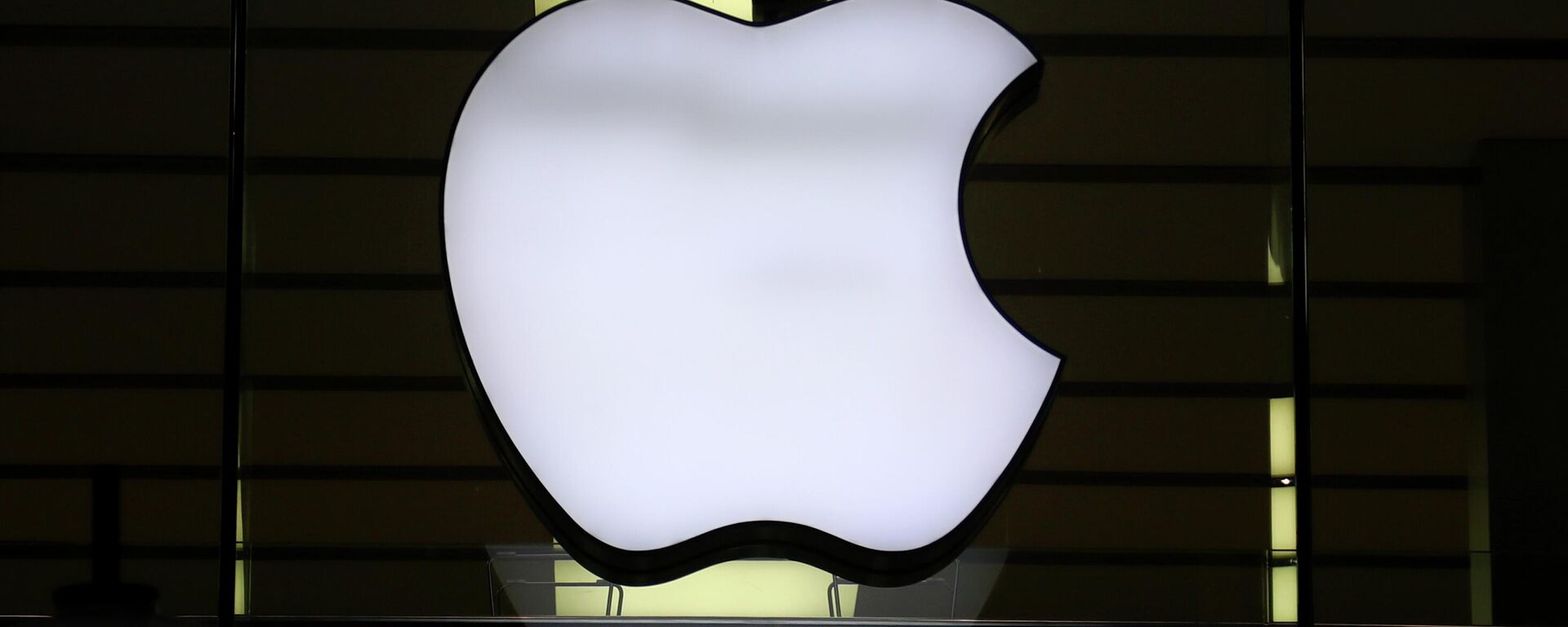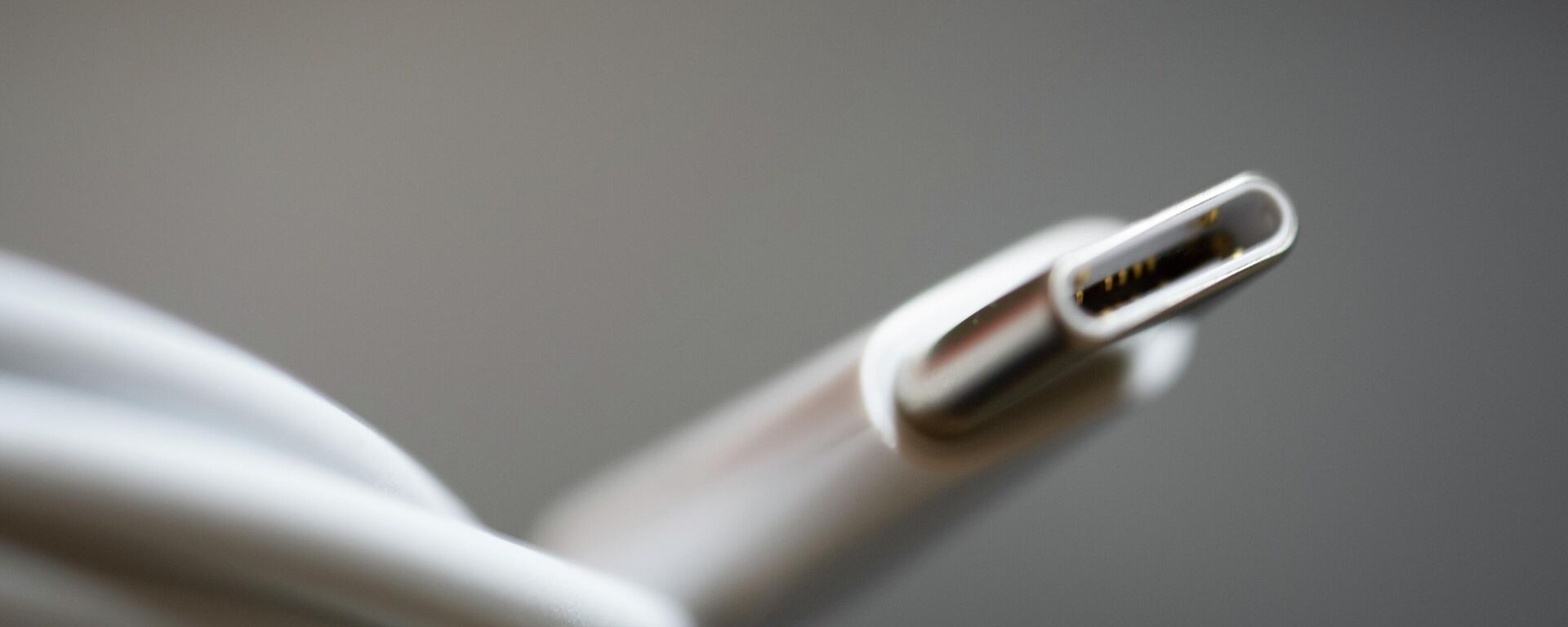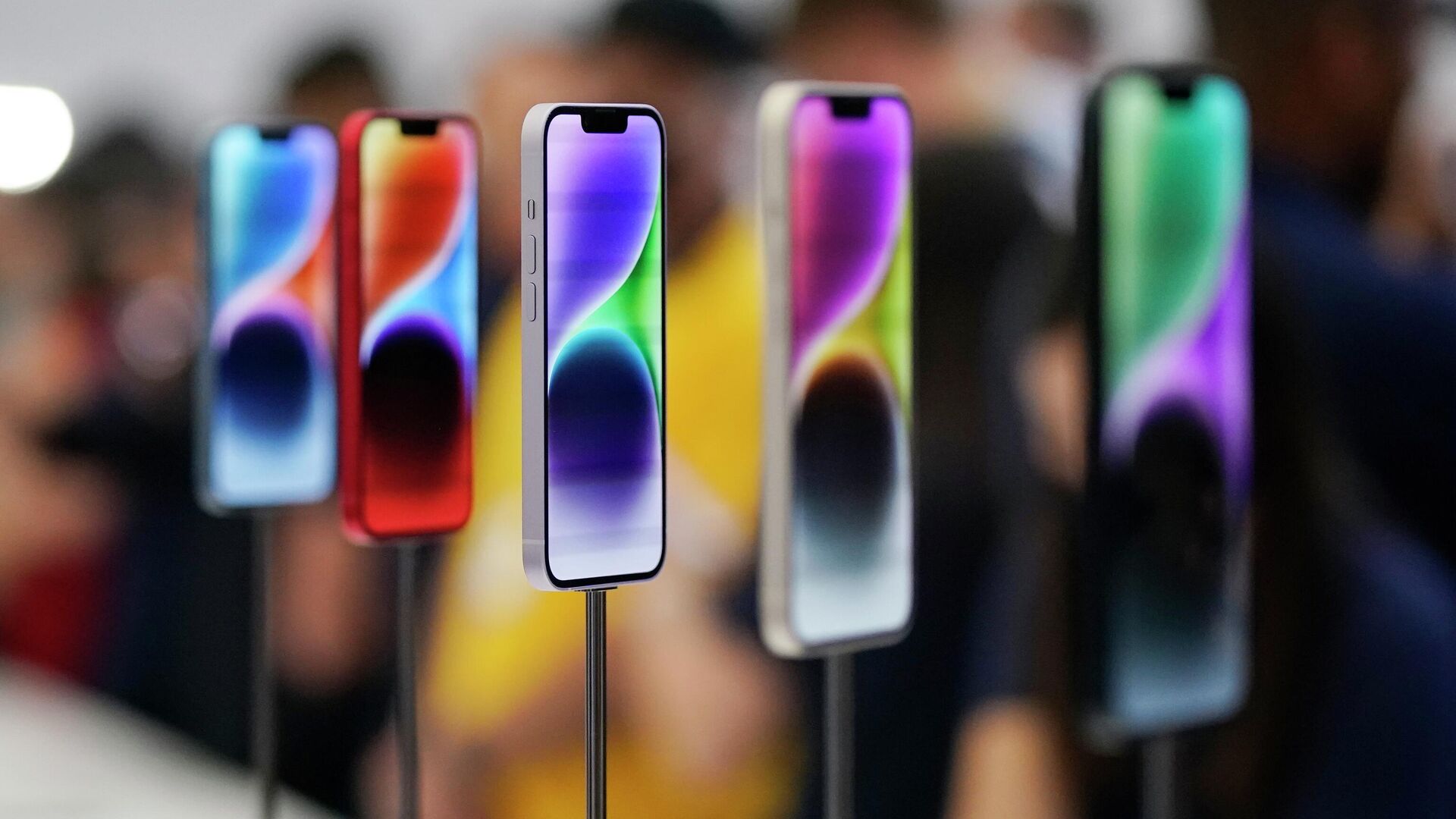https://sputnikglobe.com/20221027/apple-to-change-iphones-to-usb-c-to-comply-with-eu-law-1102745012.html
Apple to Change iPhones to USB-C To Comply With EU Law
Apple to Change iPhones to USB-C To Comply With EU Law
Sputnik International
Apple was one of the main drivers of the original USB adoption when it included it in the original 1998 iMac. The popularity of that home computer helped make... 27.10.2022, Sputnik International
2022-10-27T00:54+0000
2022-10-27T00:54+0000
2023-04-12T17:04+0000
science & tech
apple
iphone
usb
european union (eu)
https://cdn1.img.sputnikglobe.com/img/07e6/09/09/1100588266_0:171:3072:1899_1920x0_80_0_0_30bad2dc0adb18516f3b62e8d841ea30.jpg
iPhones in the European Union, and possibly worldwide, will be switching to USB-C to comply with regulations set by the EU that will require devices to adopt the standard by 2024.Apple’s senior vice president of worldwide marketing Greg Joswiak told the Wall Street Journal that it will comply with the regulation. “We have no choice as we do around the world but to comply to local laws.”He did not say if the change would be coming to iPhones in other markets.While Apple was the first company to adopt USB-C, putting it in its Macbook line of laptops, most of the company’s iPhones and iPads still use its proprietary lightning connectors (a low-end iPad was recently released with a USB-C charging port).The regulation by the EU is intended to reduce e-waste and prevent companies from locking in users who become tied to one manufacturer’s format as their collection of devices and accessories grows. It applies to devices that use up to 100w of power delivery, and devices will be required to support at least 18w of charging, essentially mandating that all devices have some form of quick charging.The EU tried to standardize charging formats more than 10 years ago by making voluntary standards, encouraging the adoption of Micro-USB. But they said it did not create concrete results for consumers, leading to formal regulation.Joswiak noted in his interview that Apple made cables detachable at that time so people could easily switch standards without having to replace the whole charger. They have also moved away from including charging plugs with their devices in an attempt to limit e-waste, something that has gotten them fined in Brazil.The USB-C standard is faster at both charging and transferring data than Apple’s lightning plug. It is also reversible like the lightning plug, though it is slightly thicker.However, that was not the case the last time the EU attempted to standardize the charging format in 2010. At that time, Apple was using the 30-pin connector it had used since the original iPod. It had the ability to work with a variety of formats, including USB 2.0 and Firewire. It also had impressive (for the time) audio and video-out capabilities. That arguably made it better than the Micro-USB standard the EU was pushing for at the time.Apple took a huge step forward two years later when it released the lightning cable. It was significantly smaller, reversible, more durable, and faster than the Micro-USB standard and still included audio and video-out. That gave iPhones a significant advantage over Android phones that were still using the Micro-USB port.That gap in performance was arguably behind Android phone manufacturers’ quick adoption of the USB-C standard. It is unknown if Apple will continue to develop new charging solutions with the new EU regulation in place, which will likely prevent any new standard from Apple from being sold in the region.
https://sputnikglobe.com/20220928/apple-explains-that-it-blocked-russian-social-media-vk-app-to-comply-with-uk-sanctions-1101314847.html
https://sputnikglobe.com/20220902/everything-you-need-to-know-about-usb4-and-usb4-version-2-1100327586.html
Sputnik International
feedback@sputniknews.com
+74956456601
MIA „Rossiya Segodnya“
2022
News
en_EN
Sputnik International
feedback@sputniknews.com
+74956456601
MIA „Rossiya Segodnya“
Sputnik International
feedback@sputniknews.com
+74956456601
MIA „Rossiya Segodnya“
science & tech, apple, iphone, usb, european union (eu)
science & tech, apple, iphone, usb, european union (eu)
Apple to Change iPhones to USB-C To Comply With EU Law
00:54 GMT 27.10.2022 (Updated: 17:04 GMT 12.04.2023) Apple was one of the main drivers of the original USB adoption when it included it in the original 1998 iMac. The popularity of that home computer helped make the Intel-developed Universal Serial Bus (USB) the most popular computer connection port of all time.
iPhones in the European Union, and possibly worldwide,
will be switching to USB-C to comply with regulations set by the EU that will require devices to adopt the standard by 2024.
Apple’s senior vice president of worldwide marketing Greg Joswiak told the Wall Street Journal that it will comply with the regulation. “We have no choice as we do around the world but to comply to local laws.”
He did not say if the change would be coming to iPhones in other markets.
While Apple was the first company to adopt USB-C, putting it in its Macbook line of laptops, most of the company’s iPhones and iPads still use its proprietary lightning connectors (a low-end iPad was recently released with a USB-C charging port).

28 September 2022, 14:17 GMT
The regulation by the EU is intended to reduce e-waste and prevent companies from locking in users who become tied to one manufacturer’s format as their collection of devices and accessories grows. It applies to devices that use up to 100w of power delivery, and devices will be required to support at least 18w of charging, essentially mandating that all devices have some form of quick charging.
The EU tried to standardize charging formats more than 10 years ago by making voluntary standards, encouraging the adoption of Micro-USB. But they said it did not create concrete results for consumers, leading to formal regulation.
Joswiak noted in his interview that Apple made cables detachable at that time so people could easily switch standards without having to replace the whole charger. They have also moved away from including charging plugs with their devices in an attempt to limit e-waste, something that has gotten them fined in Brazil.
The USB-C standard is faster at both charging and transferring data than Apple’s lightning plug. It is also reversible like the lightning plug, though it is slightly thicker.

2 September 2022, 23:44 GMT
However, that was not the case the last time the EU attempted to standardize the charging format in 2010. At that time, Apple was using the 30-pin connector it had used since the original iPod. It had the ability to work with a variety of formats, including USB 2.0 and Firewire. It also had impressive (for the time) audio and video-out capabilities. That arguably made it better than the Micro-USB standard the EU was pushing for at the time.
Apple took a huge step forward two years later when it released the lightning cable. It was significantly smaller, reversible, more durable, and faster than the Micro-USB standard and still included audio and video-out. That gave iPhones a significant advantage over Android phones that were still using the Micro-USB port.
That gap in performance was arguably behind Android phone manufacturers’ quick adoption of the USB-C standard. It is unknown if Apple will continue to develop new charging solutions with the new EU regulation in place, which will likely prevent any new standard from Apple from being sold in the region.



